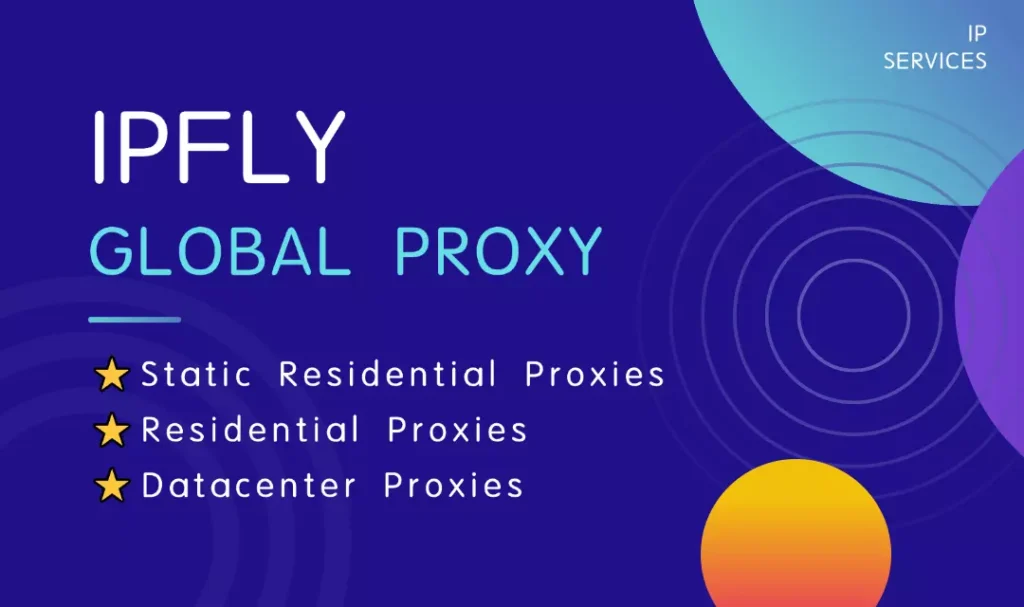In the intricate web of digital data ecosystems, proxy IP for crawlers emerges as a cornerstone technology, enabling automated scripts to navigate the internet while maintaining anonymity and compliance with access policies. At its essence, a proxy IP acts as an intermediary address that masks the origin of a crawler’s requests, allowing it to simulate diverse user behaviors and avoid detection by target websites. This technique is particularly vital for web scraping, where bots systematically extract public information from pages, but must contend with rate limits, IP bans, and ethical constraints that protect server resources from overload.
From a technical perspective, proxy IP for crawlers integrates with the TCP/IP protocol suite, where the proxy server intercepts outgoing packets from the crawler, substitutes the source IP with its own, and forwards the request to the destination. Responses follow the reverse path, preserving the data’s integrity while distributing the load across multiple IPs to mimic organic traffic patterns. This not only enhances scraping efficiency but also upholds principles of responsible data collection, ensuring that operations respect robots.txt directives and usage quotas. The following tutorial provides a structured pathway through the concepts, configuration steps, and optimization strategies for using proxy IP for crawlers, blending precise technical explanations with practical examples to guide developers and researchers toward effective, ethical implementations.

The Technical Foundations of Proxy IP for Crawlers
Proxy IP for crawlers operates on the principle of network address translation (NAT), a mechanism where the proxy server rewrites packet headers to alter the apparent source, enabling the crawler to appear as a legitimate user from various locations. In IPv4 environments, this involves mapping the crawler’s local IP to a pool of proxy IPs, each with its own subnet mask and gateway configuration to ensure seamless routing. The process begins with the crawler initiating an HTTP or SOCKS request, which the proxy intercepts, authenticates if required, and relays after substitution— a workflow grounded in session-layer protocols that maintain state for ongoing connections.
Key to this is IP rotation, where the crawler cycles through proxy IPs at defined intervals or after a set number of requests, preventing patterns that could trigger anti-bot measures like CAPTCHA challenges or temporary bans. Scientifically, rotation aligns with statistical sampling in data science, distributing queries to avoid bias toward any single IP, thereby reducing the variance that detection algorithms exploit through machine learning models trained on traffic anomalies. For ethical scraping, proxies must support user-agent rotation and delay mechanisms to emulate human browsing, ensuring compliance with site terms and minimizing server strain. Understanding these foundations equips users to design crawlers that are not only efficient but also respectful of the digital commons.
Why Proxy IP is Essential for Crawlers: Benefits and Challenges
Integrating proxy IP for crawlers addresses core challenges in web data extraction, starting with anonymity: without proxies, a crawler’s fixed IP risks blacklisting after exceeding rate limits, halting operations and potentially violating terms of service. Proxies mitigate this by providing a buffer, allowing continuous data flow while the target site sees varied origins, much like a relay team passing the baton to sustain a marathon pace.
Performance benefits include load distribution, where multiple proxies parallelize requests to accelerate scraping, reducing time from hours to minutes for large datasets. This scalability is crucial for research applications, such as compiling market trends or academic bibliographies, where volume demands efficiency without compromise. Security enhancements arise from encryption in protocols like HTTPS proxies, protecting sensitive queries from interception during transit, a safeguard against man-in-the-middle attacks that could compromise data integrity.
Challenges persist, however: selecting reliable proxies requires evaluating uptime (above 99%) and latency (under 100ms), as poor choices can introduce bottlenecks. Ethical dilemmas surface in usage—proxies must not enable unauthorized access, emphasizing public data only and adherence to fair use policies. Overcoming these through informed selection and configuration transforms proxies from mere tools into strategic assets for sustainable scraping.
Types of Proxy IPs for Crawlers: Choosing the Right Fit
Proxy IPs for crawlers vary by origin and protocol, each suited to specific scraping needs. Residential proxies, sourced from real ISP-assigned home connections, offer the highest authenticity, blending with organic traffic to evade detection—ideal for high-stakes tasks like e-commerce monitoring where site defenses are robust. Datacenter proxies, generated from server farms, provide speed and affordability for less sensitive operations but risk blacklisting due to their identifiable patterns.
Protocol choices further refine suitability: HTTP proxies excel in web-specific scraping, handling GET/POST requests with ease, while SOCKS5 proxies support broader applications, tunneling any traffic type for versatility in multi-protocol crawlers. Rotating proxies cycle addresses automatically, distributing load to maintain clean reputations, whereas sticky proxies hold IPs for longer sessions, balancing persistence with evasion. Selection hinges on project scale—residential for precision, datacenter for volume—ensuring alignment with ethical guidelines and performance goals.
Step-by-Step Tutorial: Configuring Proxy IP for a Basic Crawler
This tutorial outlines the configuration of proxy IP for crawlers using Python, a popular language for scripting, presented as a modular workflow to build and test incrementally.
Environment Preparation: Install necessary libraries via pip (e.g., requests for HTTP handling, beautifulsoup4 for parsing), and acquire a pool of proxy IPs from a provider, noting formats like ‘ip:port:username:password’.
Proxy Integration in Code: Define a proxy dictionary in your script, specifying the IP and authentication for each request:
import requests from bs4 import BeautifulSoup proxies = { 'http': 'http://username:password@proxy-ip:port', 'https': 'http://username:password@proxy-ip:port' } response = requests.get('https://example-site.com', proxies=proxies) soup = BeautifulSoup(response.text, 'html.parser') # Extract data, e.g., titles = [title.text for title in soup.find_all('h1')]This setup routes the get request through the proxy, masking the origin.
Rotation Implementation: Create a list of proxies and cycle through them randomly or sequentially to distribute load:
import random proxy_list = [ {'http': 'http://user1:pass1@ip1:port1', 'https': 'http://user1:pass1@ip1:port1'}, {'http': 'http://user2:pass2@ip2:port2', 'https': 'http://user2:pass2@ip2:port2'} ] for url in urls_to_scrape: proxy = random.choice(proxy_list) response = requests.get(url, proxies=proxy, timeout=10) # Process responseRandom selection prevents patterns, with timeouts handling failures gracefully.
Testing and Validation: Run the crawler on a small set of URLs, logging proxy usage and success rates; use tools like curl to verify IP changes (‘curl ifconfig.me –proxy http://user:pass@ip:port’). Monitor for errors like 403 forbidden, adjusting rotation frequency.
Ethical Refinement: Incorporate delays (e.g., time.sleep(random.uniform(1, 3))) and respect robots.txt by parsing directives before scraping, ensuring compliance with site rules.
This workflow yields a functional crawler, scalable for larger projects with modular extensions like error retry logic.
Advanced Techniques: Optimizing Proxy IP for Crawlers
Beyond basics, advanced optimization involves session management with persistent connections to reuse proxies, reducing overhead, and geolocation-aware selection to target region-specific data. Implement error handling with exponential backoff for failed requests, and integrate logging frameworks to track metrics like average response time across IPs. For high-volume operations, use threading to parallelize crawls, distributing across proxy pools to balance load and avoid overwhelming targets.
Incorporate user-agent rotation alongside IP changes to further humanize traffic, drawing from behavioral analysis to replicate natural browsing rhythms. These techniques elevate crawlers from rudimentary scripts to robust systems, capable of handling terabytes of data while minimizing footprint.
Ethical and Legal Considerations in Proxy IP for Crawlers
Using proxy IP for crawlers demands adherence to ethical standards, prioritizing public data extraction and respecting site boundaries to avoid resource abuse. Legally, comply with terms of service and regulations like GDPR for data handling, documenting consent where applicable. Transparency in research—sharing methods without enabling misuse—upholds the community’s trust, ensuring proxies serve innovation rather than exploitation.
In conclusion, proxy IP for crawlers unlocks the potential of web data while demanding disciplined application. Through this tutorial, readers can construct ethical, efficient systems, harnessing the internet’s wealth responsibly.
Heads up! The IPFLY Telegram community just dropped a “2025 Anti-Crawl Proxy Guide”—only for new joiners! First visit IPFLY.net to check services, then join the group to grab it—spots fill fast. If you want to save time, act now!



